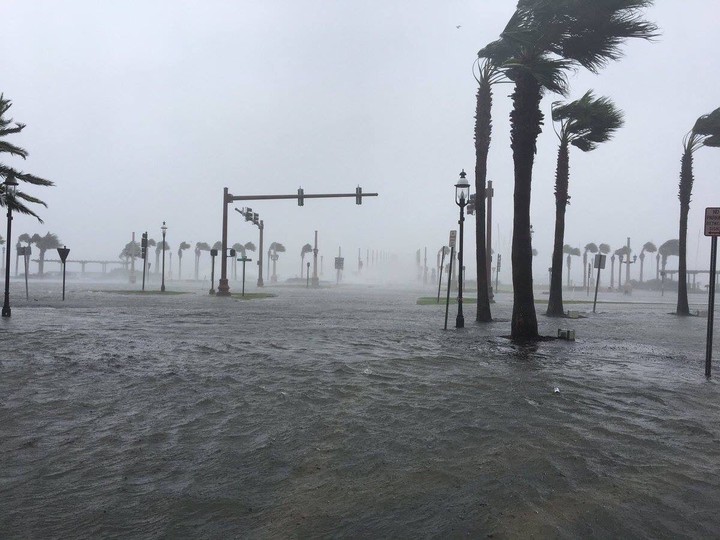Impacts of hurricane disturbance on water quality across the aquatic continuum of a black-water river to estuary complex

Abstract
Hurricanes cause landscape-scale disturbances that affect biogeochemical cycling and water quality in coastal ecosystems. During Hurricane Irma’s passage through northern Florida, water movements driven by wind velocities up to 105 km h−1 caused a salinity peak in an estuary/blackwater river complex. Water quality was monitored across the 15 km site to detect the magnitude and duration of disturbance. Saline water intruded 15 km inland into a freshwater portion of the river that peaked at a salinity of 2 psu. Due to the volume of precipitation from the hurricane, significant runoff of freshwater and dissolved organic matter (DOM) caused a decrease in salinity, dissolved oxygen (DO), and Chlorophyll-a concentrations while increasing turbidity and fluorescent dissolved organic matter (fDOM). The disturbance caused rapid changes observed by in-situ water quality monitors over a 3-week period, but some effects persisted for longer periods as shown by 3-month weekly water sampling. This disturbance caused shifts in DOM loading, altered salinity dynamics, and reshaped landscapes due to wind and wave surge both in upland marsh and downstream estuary. Hurricane disturbance temporarily and abruptly alters the aquatic continuum, and observations of system response can help us understand the mechanisms associated with ecosystem resilience and recovery.